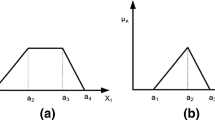Abstract
Robust point target detection of infrared clutter background has drawn great interest of scholars. Recently, morphological filter is playing a significant role in detecting infrared point target. Generally, the background clutter and targets are diverse in the case of each image. Traditional fixed structural elements and dimensions cannot be adjusted adaptively to acquire to successful point target detection in different complex backgrounds. Therefore, a new method is introduced based on quantum genetic algorithm to optimize and obtain structural element which is used as morphological filter for small target detection in original infrared images.Then,morphological contrast enhancement is further proposed to enhance energy of point targets after the filtered image is obtained.Thus, an enormous background clutter and noise are suppressed and the contrast between target and background are observably increased. Finally, by setting proper threshold, the point targets can be detected perfectly. Experimental evaluation results show that the proposed adaptive morphological contrast enhancement based on quantum genetic algorithm is effective and robust with respect to detection accuracy compared with the traditional morphological filter and other filtering algorithms.








Similar content being viewed by others
References
Li J, Li S ,Zhao Y, et al. (2016) Background suppression for infrared dim and small target detection using local gradient weighted filtering. International Conference on Electrical Engineering and Automation
Jiang D, Wang Y, Lv Z, et al. (2019) Big data analysis-based network behavior insight of cellular networks for industry 4.0 applications, IEEE Transactions on Industrial Informatics, online available. https://doi.org/10.1109/TII.2019.2930226
Seyed MF, Reza MM, Mahdi N (2018) Flying small target detection in IR images based on adaptive toggle operator. IET Comput Vis 12(4):527–534
Jiang D, Huo L, Lv Z et al (2018) A joint multi-criteria utility-based network selection approach for vehicle-to-infrastructure networking. IEEE Trans Intell Transp Syst 19(10):3305–3319
Zhang H, Zhang L, Yuan D (2018) Infrared small target detection based on local intensity and gradient properties. Infrared Phys Technol 89:88–96
Xie K, Fu K, Zhou T, et al. (2015) Small target detection using an optimization-based filter.International Conference on Acoustic: 1583–1587
Jiang D, Huo L, Song H (2018) Rethinking behaviors and activities of base stations in mobile cellular networks based on big data analysis. IEEE Transactions on Network Science and Engineering 1(1):1–12
Gao C, Wang L, Xiao Y et al (2018) Infrared small-dim target detection based on Markov random field guided noise modeling[J]. Pattern Recogn 76:463–475
Jiang D, Wang W, Shi L et al (2018) A compressive sensing-based approach to end-to-end network traffic reconstruction. IEEE Transactions on Network Science and Engineering 5(3):1–12
Deng L, Zhu H, Zhou Q et al (2018) Adaptive top-hat filter based on quantum genetic algorithm for infrared small target detection. Multimed Tools Appl 77(6):10539–10551
Jiang D, Huo L, Li Y (2018) Fine-granularity inference and estimations to network traffic for SDN. PLoS One 13(5):1–23
Zhang L, Du Y, Li B (2015) Research on threshold segmentation algorithm and its application on infrared small target detection algorithm. International Conference on Signal Processing 19(1):678–682
Wei H, Tan Y, Lin J (2016) Robust infrared small target detection via temporal low-rank and sparse representation. International Conference on Information Science 1(1):583–587
L. Huo, D. Jiang, X. Zhu, et al. (2019) An SDN-based fine-grained measurement and modeling approach to vehicular communication network traffic, International Journal of Communication Systems, online available, pp. 1–12
H.Zhang,Y.Niu, H. Zhang. Small target detection based on difference accumulation and Gaussian curvature under complex conditions. Infrared Phys Technol ,2017,87 :55–64
Lv Z, Kong W, Zhang X, Jiang D, et al. (2019) Intelligent security planning for regional distributed energy Internet, IEEE Transactions on Industrial Informatics, online available, pp. 1–8. https://doi.org/10.1109/TII.2019.2914339
Jiang D, Huo L, Lv Z, et al. (2018) A joint multi-criteria utility-based network selection approach for vehicle-to-infrastructure networking. IEEE Transactions on Intelligent Transportation Systems, pp(99): 1–15
Deng X, Sun Z, Liu M et al (2016) Infrared small-target detection using multiscale gray difference weighted image entropy[J]. IEEE Trans Aerosp Electron Syst 52(1):60–72
Wang F, Jiang D, Qi S (2019) An adaptive routing algorithm for integrated information networks. China Communications 7(1):196–207
Lou J, Zhu W, Wang H et al (2017) Small target detection combining regional stability and saliency in a color image[J]. Multimed Tools Appl 76(13):14781–14798
Wang F, Jiang D, Wen H, et al. (2019) Adaboost-based security level classification of Mobile intelligent terminals, the journal of supercomputing, pp. 1-19. Online available
Yao Y, Hao Y, Wang H (2017) Small infrared target detection based on spatio-temporal fusion saliency. 17th IEEE International Conference on Communication Technology
Miao L, Xu L, Jiang D (2018) Optimal on-off control for a class of discrete event systems with real-time constraints, discrete event dynamic systems. Theory and Applications 12(3):1–13
Zhu J, Song Y, Jiang D et al (2018) A new deep-Q-learning-based transmission scheduling mechanism for the cognitive internet of things. IEEE Internet Things J 5(4):2375–2385
Zhang L, Peng Z (2019) Infrared small target detection based on partial sum of the tensor nuclear norm[J]. Remote Sens:11(4)
Zhang L, Peng L, Zhang T, Cao S, Peng Z (2018) Infrared small target detection via non-convex rank approximation minimization joint l2,1 norm. Remote Sens:10(11)
Chen L, Jiang D, Song H et al (2018) A lightweight end-side user experience data collection system for quality evaluation of multi-media communications. IEEE Access 6(1):15 408–15419
Shi Y, Wei Y, Yao H, Pan D, Xiao G (2018) High-boost-based multiscale local contrast measure for infrared small target detection. IEEE Geosci Remote Sens Lett 15(1):33–37
Acknowledgments
This work has been supported by the National Natural Science Foundation of China (under grant number of 61563049).
Author information
Authors and Affiliations
Corresponding author
Additional information
Publisher’s note
Springer Nature remains neutral with regard to jurisdictional claims in published maps and institutional affiliations.
Rights and permissions
About this article
Cite this article
Guofeng, Z., Hamdulla, A. Adaptive Morphological Contrast Enhancement Based on Quantum Genetic Algorithm for Point Target Detection. Mobile Netw Appl 26, 638–648 (2021). https://doi.org/10.1007/s11036-019-01410-8
Published:
Issue Date:
DOI: https://doi.org/10.1007/s11036-019-01410-8




